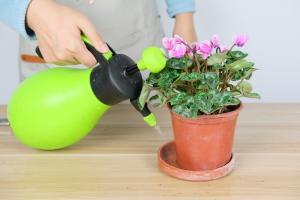How to Grow Alpine Plants in Pots
Alpine plants are a great way to add unique and beautiful plant life to your garden or patio. These plants originate from mountainous regions and often have small, hardy foliage that can add interest and texture to any outdoor space. One of the best ways to grow alpine plants is in pots, as it allows you to control their growing conditions and maintain their unique care requirements. Here's what you need to know to grow alpine plants in pots.
Choose the Right Container
The first step in growing alpine plants in pots is to choose the right container. You'll want to choose a container that's at least twice the size of the plant's root ball and has adequate drainage holes. A deep pot will also help keep the root system cool, which is important for healthy growth. You may also want to choose a pot that complements the colors or shapes of your alpine plants, which can add an extra level of interest to your potted garden.
Choose the Right Soil
Alpine plants require specific soil conditions in order to thrive in pots. You'll want to choose a soil that is gritty and free-draining, with a neutral to slightly acidic pH. To achieve the right texture, you can mix equal parts of potting soil, perlite, and coarse sand. This will provide the optimal conditions for your alpine plants to grow healthy and strong, as well as prevent waterlogging and root rot.
Choose the Right Location
The third step in growing alpine plants in pots is to choose the right location. Alpine plants prefer cool, moist environments with good air circulation. You'll want to provide a spot that is sheltered from direct sunlight, but still has access to bright light for at least several hours a day. You should also keep your pots out of areas with high winds or fluctuating temperatures, as these can stress and damage your plants.
Watering and Feeding
Once you've chosen the right container, soil, and location, you'll need to water and feed your alpine plants. Since alpine plants come from mountainous regions with poor soil fertility, it's important to fertilize them sparingly. You can use a balanced, slow-release fertilizer once a year in the spring, or a specially-formulated alpine plant fertilizer. For watering, you'll want to keep the soil consistently moist but not waterlogged, and avoid letting the plants dry out completely. You can use a drip tray to catch any excess water and prevent root rot.
Seasonal Care
Finally, you should care for your alpine plants seasonally to ensure they stay healthy and vibrant. In the winter, many alpine plants go dormant, and you'll want to provide a layer of mulch or straw to protect them from freezing temperatures. In the spring, you can remove any dead or damaged foliage and give your plants a boost of fertilizer. In the summer, you may need to move your pots to a cooler location to avoid heat stress, and in the fall, you can begin preparing your plants for winter dormancy.
Overall, growing alpine plants in pots can be a rewarding and enjoyable process. By following these tips for choosing the right container, soil, and location, as well as providing appropriate watering, feeding, and seasonal care, you can cultivate a healthy and thriving alpine garden right on your patio or balcony.

 how many times do yo...
how many times do yo... how many planted tre...
how many planted tre... how many pine trees ...
how many pine trees ... how many pecan trees...
how many pecan trees... how many plants comp...
how many plants comp... how many plants can ...
how many plants can ... how many plants and ...
how many plants and ... how many pepper plan...
how many pepper plan...






























